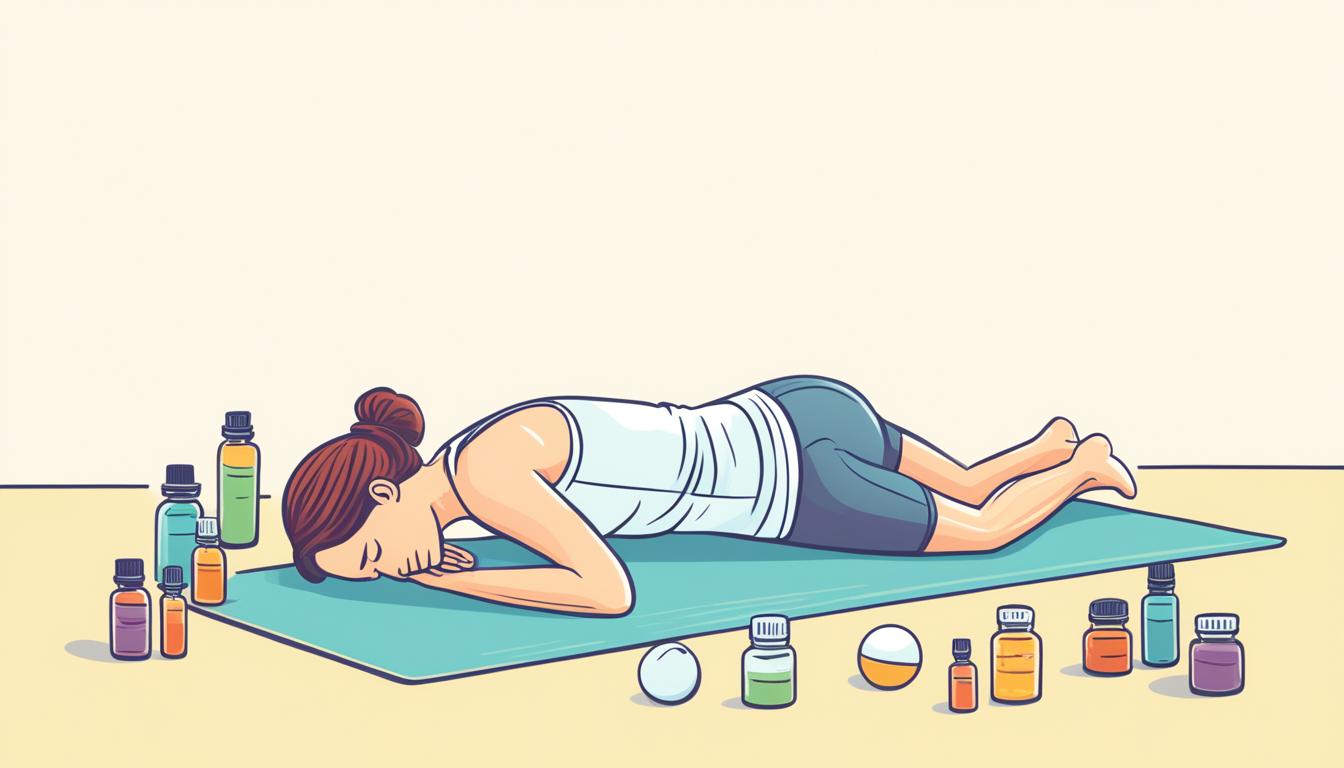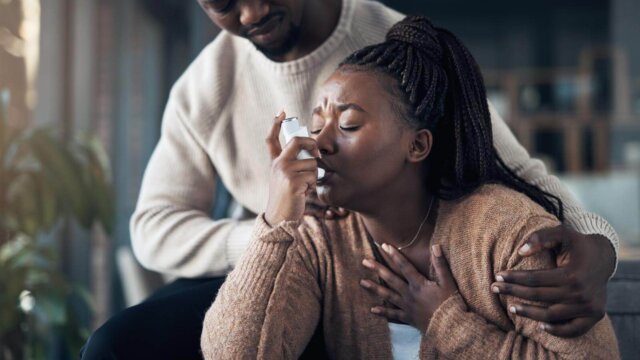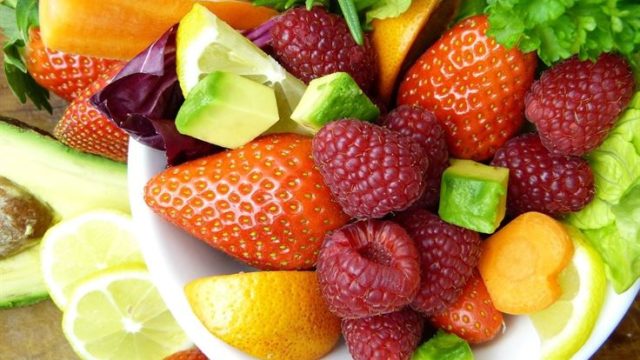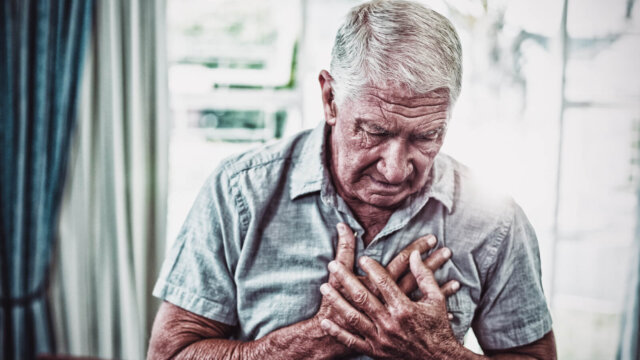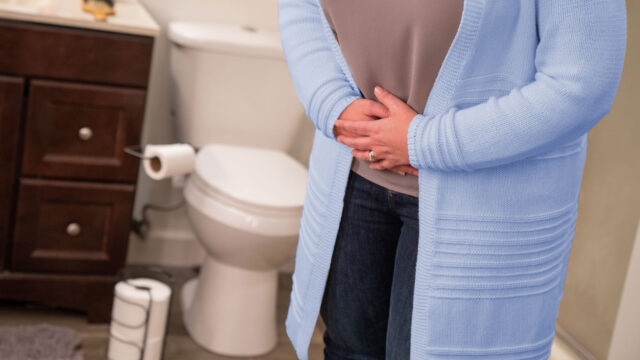FTC disclaimer: This post may contains affiliate links and we will be compensated if you click on a link and make a purchase.
Scoliosis affects about 6–9 million people in the U.S. It’s when the spine curves sideways abnormally. Most people with scoliosis can use natural home remedies and self-care to feel better. Learn how to manage your symptoms and keep your spine healthy.
Key Takeaways
- Mild scoliosis, with a Cobb angle under 20 degrees, can be helped by exercise.
- Schroth exercises improve self-image and back muscle strength and reduce pain.
- Causes of scoliosis include genetics, uneven pelvis, past surgeries, and head injuries.
- About 2-3% of people have scoliosis, and managing pain is a big issue
- Exercises like pelvic tilts, arm and leg lifts, and yoga help manage scoliosis
Understanding Scoliosis and Its Causes
Scoliosis is a condition where the spine curves sideways, making an “S” or “C” shape. It can be mild or severe, affecting how you stand, move, and live. Knowing about scoliosis helps in finding the right care and treatments.
What is Scoliosis?
Scoliosis makes the spine curve, twist, and rotate in three dimensions. Curves under 10 degrees are normal, but more than 40 degrees are severe. Finding it early and getting the right treatment is key. If not treated, it can get worse and cause more problems.
Types of Scoliosis and Their Causes
There are many types of scoliosis, each with its cause. Idiopathic scoliosis is the most common and has no known cause. Congenital scoliosis happens at birth, and neuromuscular scoliosis is linked to conditions like spina bifida or cerebral palsy. About 30% of people with scoliosis have a family history of it.
Knowing the types and causes of scoliosis helps in making a good treatment plan. Everyone with scoliosis is different, so care needs to be tailored to their needs.
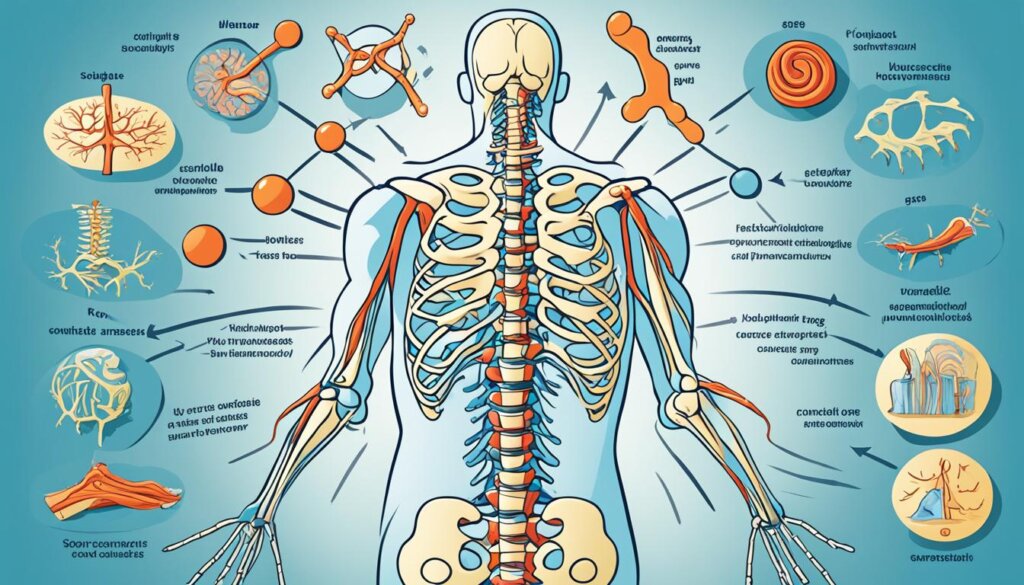
Scoliosis affects both body and mind, so getting medical help quickly is key. There are many ways to treat it, from non-surgical to surgery, based on how severe it is. Understanding scoliosis helps people manage it better and live a fuller life.
Initial At-Home Treatments for Scoliosis
If you have mild scoliosis, you might find relief at home. Scoliosis Treatments include over-the-counter drugs, ice and heat, and exercises. These can help with pain and improve your spine’s health.
Over-the-Counter Medications
NSAIDs and muscle relaxants can ease Scoliosis Pain Relief. They reduce inflammation and ease discomfort. This lets you do Natural Scoliosis Remedies like exercises.
Ice and Heat Therapy
Ice and heating pads can help with Scoliosis Pain Relief. Ice narrows blood vessels and numbs pain. Heating pads widen blood vessels, increase movement, and loosen muscles for Exercises for Scoliosis.
Using these Natural Scoliosis Remedies daily helps you manage scoliosis. It keeps you healthy and active.
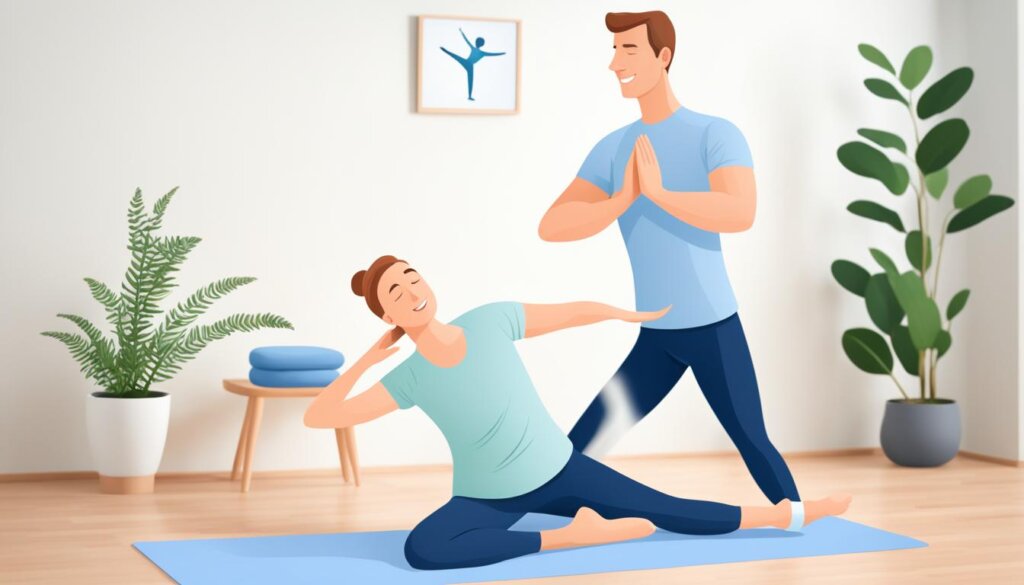
“Most people with scoliosis do not need surgery. Non-surgical treatment is the first step for scoliosis patients.”
The Importance of Exercise for Scoliosis
Exercises are key in managing Scoliosis, a condition where the spine curves abnormally. It affects nearly 7 million people in the U.S., showing how vital good treatments are. Doctors use the Cobb angle to measure how severe it is, from mild to very-severe. Exercises, especially those made for scoliosis, can make posture better and ease pain.
Strengthening the core and back is vital to keep the spine stable and stop scoliosis from getting worse. Walking, swimming, cycling, and weight training can strengthen spine-supporting muscles. Gentle stretches can also ease pain. Doing exercises like sitting rotation stretch can make flexibility and back pain better. Cat/cow, bird dog, and plank exercises boost core strength and posture.
Physical therapy is also great, teaching the right way to exercise to avoid injury. Exercises for scoliosis can make core muscles stronger, posture better, and reduce back pain and tiredness. The Schroth Method is a special physical therapy for scoliosis, with exercises made for each spine type. This method, by Katharina and Christa Schroth, works to straighten, lengthen, and stabilize the spine. Most people see their spine curvature improve after doing the Schroth program.
“Exercises are a crucial component of scoliosis management, helping to strengthen the core, improve posture, and reduce discomfort.”
In conclusion, exercises are vital for managing scoliosis and improving health. Using different exercises, from general to specific ones for scoliosis, can greatly help in treating spinal curvature.

Always talk to a healthcare expert to get an exercise plan that fits your needs and scoliosis level. With the right exercises, managing scoliosis can greatly improve your life quality.
Home Remedies for Scoliosis: Easing Discomfort
Living with scoliosis can be tough, but there are ways to make it easier. Simple home remedies can help. Stretching exercises and Schroth exercises are great for improving spinal health and balance.
Stretching Exercises
Stretching can really help with scoliosis pain and tension. Try leaning your body in one direction while holding your hands above your head. Or, squeeze your shoulder blades together by lacing your fingers behind your back.
Schroth Exercises
Schroth exercises are special postures for scoliosis. They help with posture, reduce pain, and teach correct posture for daily life.
Adding these home remedies to your routine can really help with scoliosis. It can make you feel better and improve your life quality. Always talk to your doctor before starting any new exercises or treatments.
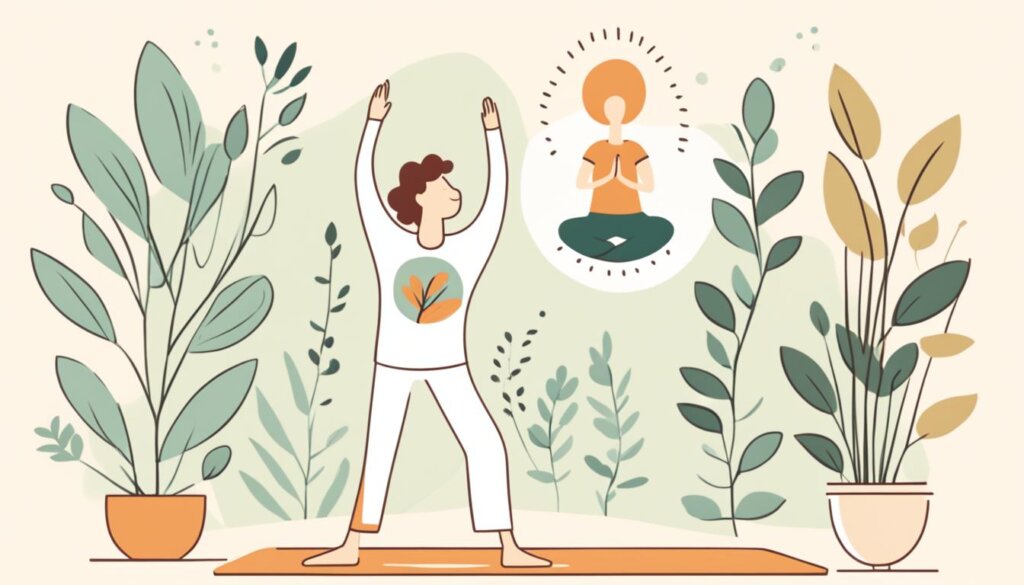
Diet and Nutrition for Scoliosis Management
Proper nutrition is key for managing scoliosis. This spinal condition can cause discomfort and affect well-being. By choosing foods wisely, people with scoliosis can lessen inflammation, boost bone health, and aid healing.
Anti-Inflammatory Foods
For those with scoliosis, fighting spinal inflammation is important. Eating more fruits, veggies, healthy fats, and herbs can help. Foods like fatty fish, flaxseeds, and walnuts are full of omega-3 fatty acids. These can lessen pain and discomfort from scoliosis.
Supplements for Scoliosis
Along with an anti-inflammatory diet, some supplements can help too. Doctors might suggest vitamin D3 for stronger bones, magnesium for better spinal health, and methylated vitamin B12 to fix deficiencies and help with neurotransmitters.
Kids and teens with scoliosis do well with treatments like chiropractic care, therapy, exercise, and bracing. Keeping a healthy weight is key. Being too thin can lead to scoliosis, and being overweight can make it worse.
By eating right and using the right supplements, people with scoliosis can help manage their condition. This can lead to better health overall.
Proper Sleep Posture and Mattress Quality
If you have scoliosis, finding the right sleep setup can help a lot. It can make managing your condition easier and reduce discomfort. Scoliosis changes how you stand, leading to back stiffness or discomfort all day and night. Sleeping on your back can help stop scoliosis from getting worse, and doctors often suggest it.
Choosing a medium-firm mattress is best for people with scoliosis because it supports your spine well. The Saatva Rx mattress and others are great for easing scoliosis pain. If you still feel pain after trying new sleep positions and a new mattress, you might need a brace or surgery.
Good sleep is key for handling scoliosis pain and keeping up your energy for exercises. Some adults might need to wear back braces to stop their spine from curving more, especially if a doctor suggests it.
The Desert Institute for Spine Care offers surgery and other treatments to make daily life easier for scoliosis patients. Their experts are skilled in caring for scoliosis patients.
About 2 percent of people worldwide have scoliosis, with six million in the U.S.. Most people get diagnosed between ages 10 and 15, but it can happen at any time. As people get older, scoliosis can get worse, causing more back pain.
Scoliosis can disrupt sleep, causing pain that wakes you up at night. It might also be linked to sleep problems like sleep apnea in young people.
Using support pillows and a medium-firm mattress can improve sleep for those with scoliosis. Kids might need back braces to help their spine grow right, but adults might find them hard to sleep with.
Chiropractic Care for Scoliosis Relief
For people with scoliosis, finding ways to ease pain and improve spinal health is key. Chiropractic care is one such option that’s getting attention. It’s a gentle way to fix spinal misalignment caused by scoliosis.
Going to the chiropractor regularly can make the spine work better and move more easily. This can stop the condition from getting worse and lessen pain. Research shows chiropractic care doesn’t fix scoliosis, but it can help manage symptoms and slow down the condition’s progress.
Chiropractors who focus on scoliosis offer care tailored to each patient’s needs. This approach is seen as a natural way to handle scoliosis, offering an alternative to traditional treatments.
Scoliosis Statistic | Percentage/Value |
|---|---|
Girls have a much higher risk of scoliosis progression than boys. | |
Scoliosis is estimated to affect six to nine million Americans. | |
Mild cases of scoliosis are reported to be the most common. | |
Surgery is considered a last resort for treating scoliosis. |
Chiropractic care might not fix scoliosis completely, but it can be part of a bigger treatment plan. By seeing a chiropractor who knows about scoliosis, people can see how this gentle method can help. It’s a natural way to deal with spinal curves and pain.
Yoga and Pilates for Scoliosis
Scoliosis makes the spine curve abnormally, affecting life quality. Yoga and pilates can help manage this condition. They strengthen muscles, improve posture, and teach correct alignment. This helps with scoliosis symptoms.
Yoga and pilates routines for scoliosis reduce pain and boost flexibility. A study showed 25 people with scoliosis reduced their curve by 40% with daily side plank poses for 6 months.
These exercises don’t cure scoliosis but offer many benefits. They improve posture, increase breathing, and help with relaxation. This makes life better for those with scoliosis.
About 6 to 9 million people in the U.S. have scoliosis. Yoga and pilates, tailored to each person, help manage scoliosis. They reduce pain, increase flexibility, and support wellness.
Pilates is great for scoliosis because it strengthens the core and aligns the spine. It fights the muscle changes from scoliosis. This makes it a good way to manage the condition and boost health.
Yoga and pilates are key parts of a holistic plan for scoliosis. They help ease pain, increase flexibility, and improve wellness for those with scoliosis.
Home Remedies for Scoliosis
Scoliosis makes the spine curve sideways. You can manage it with natural home remedies. These can make you feel better and keep your spine healthy. Learning about scoliosis helps you manage it at home.
Using over-the-counter medicines is a key remedy for scoliosis. Being healthy helps in treating scoliosis better. NSAIDs like ibuprofen can lessen pain and reduce swelling. Heat and ice can also help with muscle pain and discomfort.
Doing exercises like Schroth exercises is important. Vitamin D is key for fighting scoliosis. Eating foods that fight inflammation and taking supplements like Omega-3 can help manage scoliosis.
Getting good sleep and using a supportive mattress is also key. Omega-3 from fish oil helps with scoliosis. Chiropractic care and Yoga or Pilates can also help by improving spine alignment and strength.
Using these natural remedies, people with scoliosis can manage their condition better. Turmeric Curcumin helps with inflammation. Magnesium is good for muscles and bones. Collagen supplements help with joint strength. Physical therapy and chiropractic care are also good for spine health.
About 2% to 3% of teens have scoliosis with a 10-degree curve. Women and those with “S-shaped” curves might see their scoliosis get worse. Braces work well in young people with growing bones. Surgery like Vertebral Body Tethering might be needed if scoliosis gets worse.
“Incorporating a combination of natural remedies can be an effective way to manage scoliosis and improve overall spinal health.”
These home remedies let people with scoliosis take charge of their health. They might reduce the need for surgery. Always talk to a doctor about scoliosis, as it can be different for everyone and needs a tailored approach.
Monitoring Scoliosis Progression
It’s important to keep an eye on your scoliosis curve over time. This ensures it doesn’t affect your daily life. Working with your healthcare team helps spot any big changes. This way, you can decide if you need more Scoliosis Treatments or Scoliosis Management.
The Cobb angle is a key tool for checking scoliosis. It looks for a curve of at least 10 degrees. Scoliosis is classified as mild, moderate, severe, or very severe based on the angle. The most common type, adolescent idiopathic scoliosis, can get worse fast during puberty.
Signs of scoliosis in teens include uneven shoulders and ribs, and hips, arms, and legs of different lengths. Adults may feel pain from the spine’s compression after growth stops. Using Spinal Curvature Treatments and Scoliosis Self-Care Strategies can help manage symptoms and stop it from getting worse.
Keeping an eye on scoliosis and acting quickly is key to managing it well. With your healthcare team’s help, you can keep up with your condition and choose the best treatment.
Scoliosis Severity | Cobb Angle | Treatment Approach |
|---|---|---|
Mild | 10-25 degrees | Observation, physical therapy, exercises |
Moderate | 25-40 degrees | Bracing, physical therapy, corrective exercises |
Severe | 40+ degrees | Bracing, surgery (spinal fusion) |
Very Severe | 80+ degrees | Surgery (spinal fusion) |
Spotting scoliosis early lets you treat it before it gets worse. This helps manage symptoms, stop severe curvature, and keep the spine flexible. A mix of chiropractic care, physical therapy, bracing, and exercises works best for scoliosis.
“Regular monitoring and timely intervention are crucial for the effective management of scoliosis.”
By staying informed and working with your healthcare team, you can watch your scoliosis and choose the right treatment for you.
When to Consider Medical Treatment
Natural home remedies and self-care can help with mild to moderate scoliosis. But, some cases need more medical treatment. The choice of scoliosis treatments and spinal curvature treatments depends on how bad the condition is and how well non-invasive methods work.
Bracing for Scoliosis
Braces are often suggested for those with moderate scoliosis when the curve is over 20 to 25 degrees. They can ease pain in adults with scoliosis but can’t fix the spine shape. The aim of bracing is to stop the curve from getting worse and maybe avoid surgery.
Surgical Options for Severe Scoliosis
For curves over 40-45 degrees, spinal surgery might be the best choice to fix the spine and improve function. Surgery is needed for less than 10% of adults with scoliosis. Surgery for severe scoliosis has a 30 to 40% chance of complications. Keeping a good posture helps avoid surgery and back deformity.
Choosing the best scoliosis management plan needs a detailed check-up with doctors. They look at the person’s age, how bad the curve is, and their health. Knowing about scoliosis treatments and getting medical help early helps people with scoliosis manage their condition better and keep a good life.
Conclusion
Scoliosis is a complex issue that affects life quality. Yet, home remedies, self-care, and sometimes medical help can manage symptoms and stop the condition from getting worse. Using natural treatments like exercises, healthy food, and chiropractic care helps people with scoliosis take charge of their health. This can make their spine work better and move more easily.
Scoliosis can’t be cured but a careful approach can ease pain and improve posture without surgery. Natural treatments have fewer side effects than surgery. Catching it early and treating it right can lead to a better outcome.
The way you treat scoliosis really matters. By trying different home remedies and self-care, people with scoliosis can help manage their condition. This can make their life better overall.
FAQ
What is scoliosis, and what are its main types?
Scoliosis means the spine curves sideways. It can look like an “S” or “C” shape. There are many types, like idiopathic, congenital, and neuromuscular scoliosis. Each type has its own cause.
What are some effective home remedies for scoliosis?
For scoliosis, you can use over-the-counter meds, ice and heat, and exercises. Eating right, sleeping well, and seeing a chiropractor can also help. These methods can ease symptoms and boost spinal health.
How can exercise help with scoliosis?
Working out can strengthen muscles around the spine. Activities like walking, swimming, and cycling are good. Stretching and Schroth exercises can also help with posture and pain.
What role do diet and nutrition play in scoliosis management?
Eating foods that fight inflammation can help with scoliosis. Think fruits, veggies, healthy fats, and spices like turmeric. Vitamin D3, magnesium, and fish oil supplements can also be good.
How can chiropractic care and mind-body practices help with scoliosis?
Chiropractic care can make the spine work better and move more easily. It can stop scoliosis from getting worse and ease pain. Yoga and Pilates for scoliosis can also help with pain and flexibility.
When is medical treatment necessary for scoliosis?
If the curve is over 40-45 degrees, you might need a brace or surgery. This helps fix the spine and improve function. It’s important to check regularly to see if you need more treatment.
